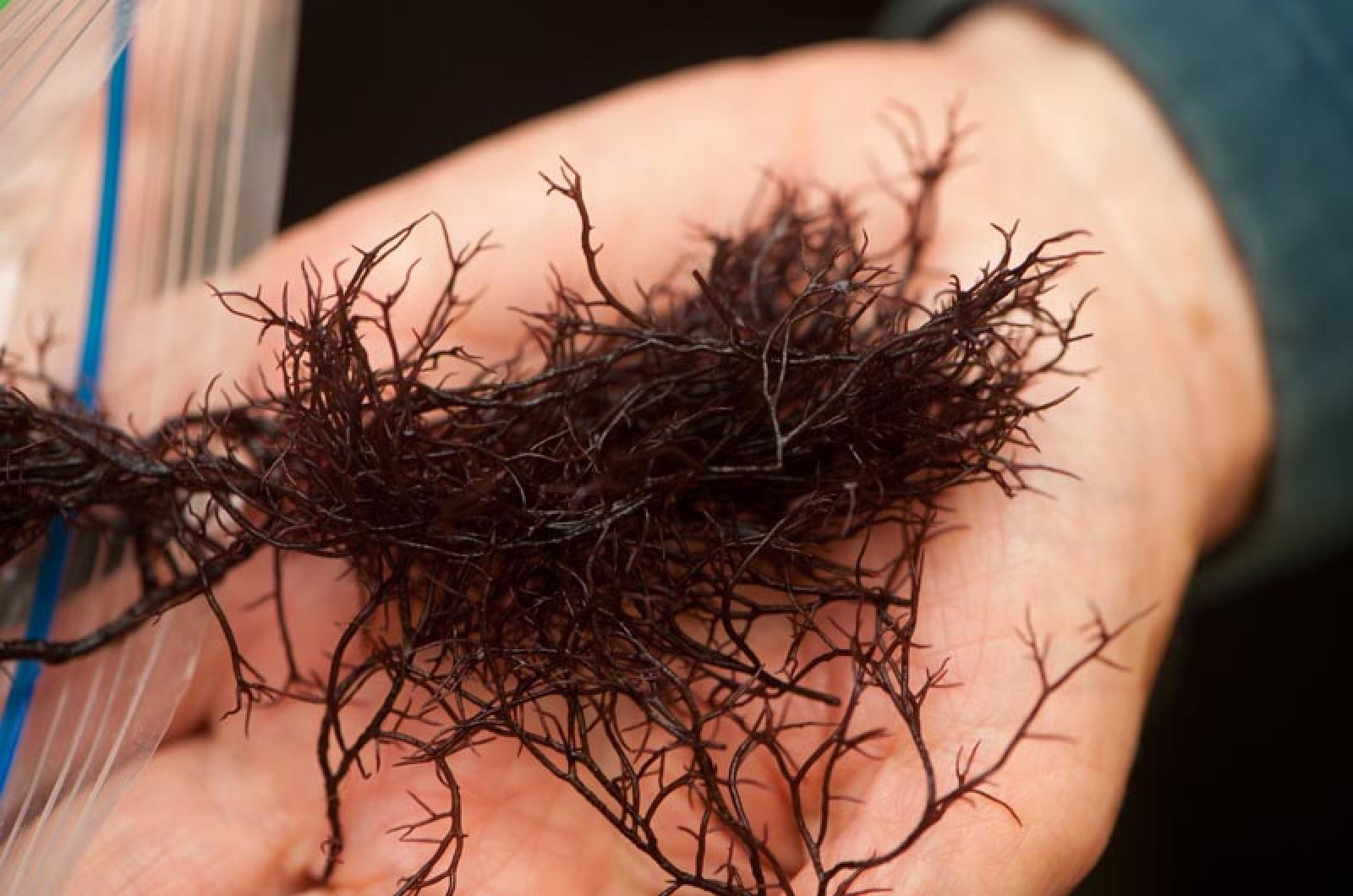What do oysters and seaweed have in common?
“Both remove nitrogen,” Woods Hole marine scientist Scott Lindell told a large group that attended his recent talk at the Chilmark Library about a two-year exploratory effort to cultivate seaweed in Waquoit Bay. The $150,000 project will continue through this summer and is funded through the Woods Hole Sea Grant program.
Mr. Lindell is marine resources manager and director of the scientific aquaculture program for the Marine Biological Laboratory. Titled Sea Vegetable Farming in Our Coastal Ponds, his talk explained the project that will explore raising seaweed as a local food and a way to improve water quality. Mr. Lindell chose Waquoit Bay for two main reasons: there is a problem with an abundance of nitrogen-rich groundwater entering the bay, and there is already a successful cultured oyster farm operation on the bay. Part of the project involves studying whether raising seaweed could take place alongside raising oysters, offering a mutual benefit to future oyster farmers.
Mr. Lindell chose to raise gracilaria tikvahiae, a fairly common seaweed that grows well from the Gulf of Mexico to Southern Maine. “It is intertidal and it grows fast in the summer,” he said.
The project involved putting out lines that hold the seaweed. They were kept above the bottom and below the surface using a series of supportive buoys. The buoys looked like lobster pot buoys.

The season began by raising the seaweed in large tanks ashore, then transporting the seaweed out to the farm. Then bundles of seaweed, about the size of a fist, were put on the line.
And within weeks the size of the seaweed doubled.
While there was no trouble growing the seaweed, the biggest challenge in the whole project was keeping other critters and plants from growing on the line. “You put something in the water and things will start to grow,” Mr. Lindell said.
He said it wasn’t long before they noticed tunicates and epiphytes fouling the line. The marine scientists discovered they could reduce the unwanted guests by giving the lines a freshwater bath.
Mr. Lindell said there are still aspects of the project that need to be worked on this year to get the process right. He is also looking at raising kelp inshore in the winter.
Raising seaweed for market is entirely new to the state of Massachusetts. Mr. Lindell said there is no permit process to farm seaweed. He said that last summer’s farm was operated under a scientific permit with the state Division of Marine Fisheries, but in the near future there will be a permit for growers.
The session was well attended by a large, diverse group that included fishermen and farmers.
Mr. Lindell is no stranger to the Vineyard, and among other things has assisted the Martha’s Vineyard Shellfish Group and a group of enterprising fishermen who started an experimental blue mussel farm in Vineyard Sound a few years ago.
He told the Gazette after the talk, “I am a firm believer that marine agronomy is part of our future, and seaweed farming in particular.”




Comments
Comment policy »